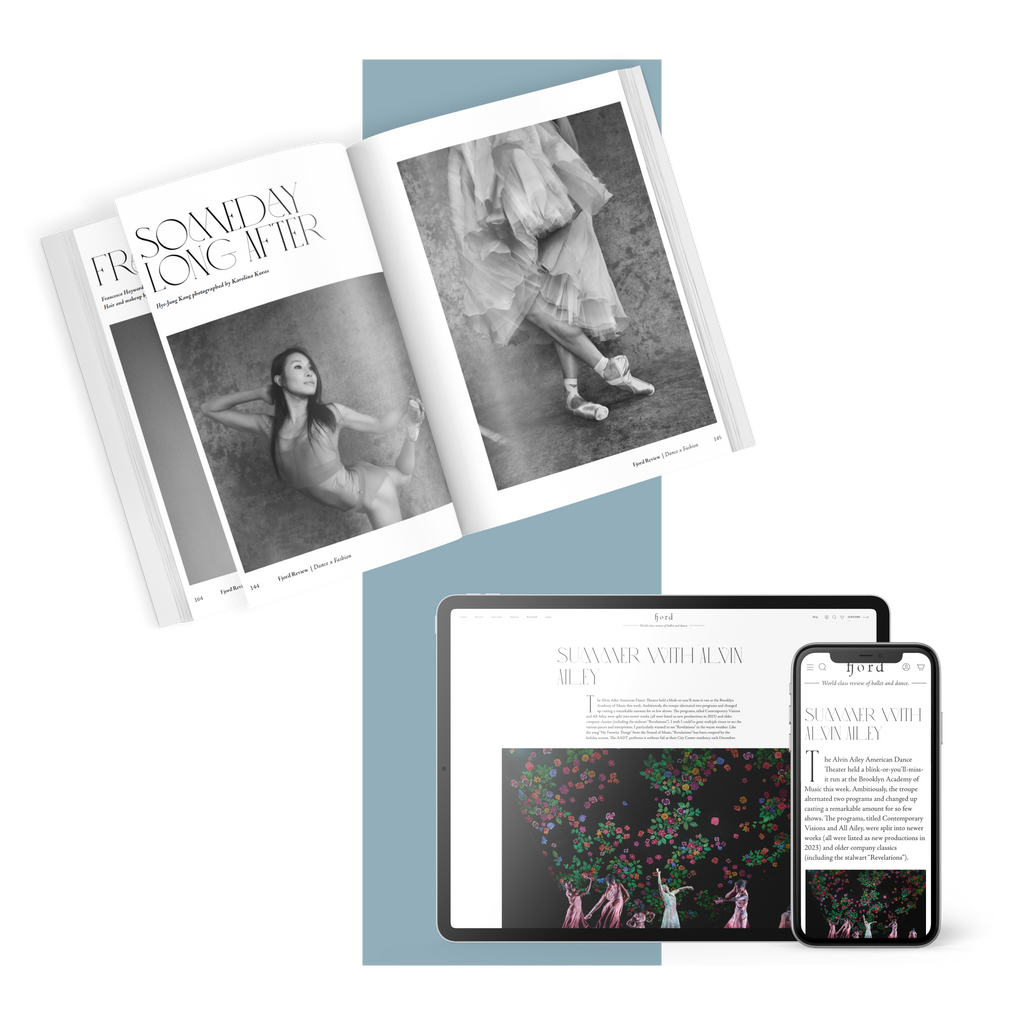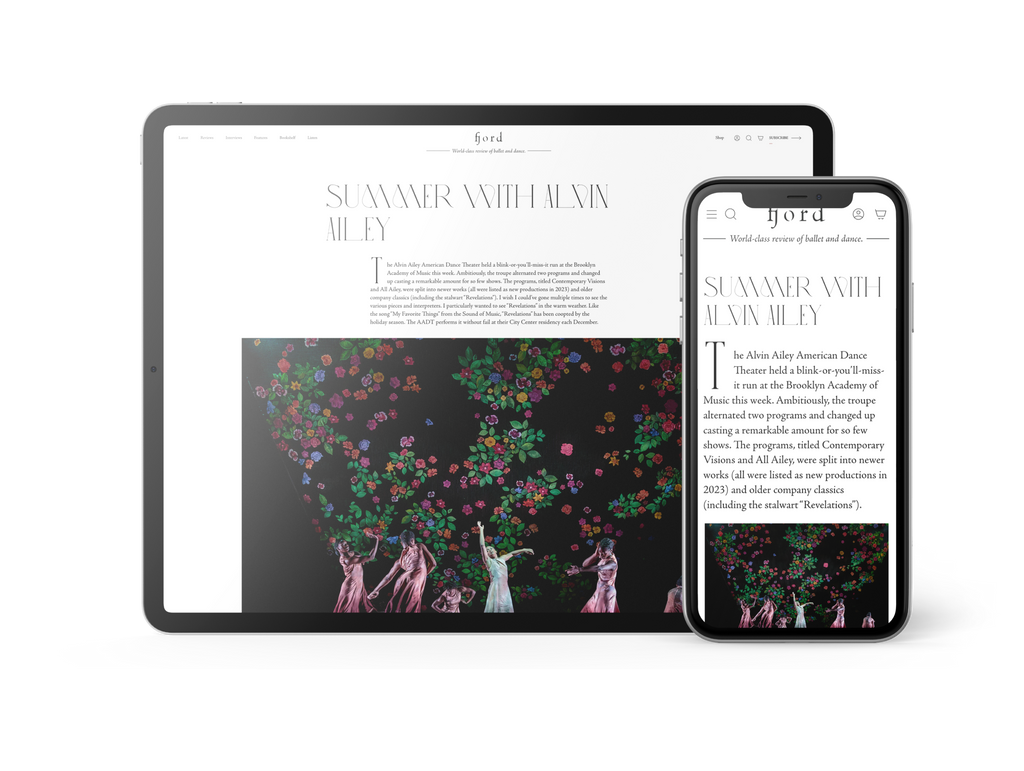I found Bell’s 2012 “Beyond the Edge of the Frame,” the darkest—in both Burke Wilmore’s lighting and its near inscrutable content—and most absorbing work on the program. Dancing against the beat of Perc’s strident techno/industrial music, its seven dancers made geometric patterns in close formations. Glittery headbands shaded their eyes (costumes by Raquel Barreto) and they often placed their hands over their eyes. What was it they did not want to see? Alternatively, what did they not want us to see? Unexpected movements: Natalie Leibert runs at a partner as if for a lift, but instead, he pushes her, wheelbarrow-like, across the stage. The whole could be variations on a street scene of waifs cutting capers to entertain each other.
Belgian choreographer Stijn Celis dedicated his “Fragile Dwellings” to the homeless in Los Angeles. The piece opened to works by Arvo Pärt and Pierre Boulez. Two couples costumed in diverse versions of white by Celis and BODYTRAFFIC, danced an excerpt sans the hanging rope lighting in the full 2011 work. They coupled, sometimes in yoga-like poses between cones of bluish light. Early on, Jessica Liu bends backwards, her head low towards the fourth wall, her arms outstretched to the audience. The group danced languid as schools of fish with rapid directional changes. Liu ends in another luxuriously deep backbend.
“A Million Voices” is Matthew Neenan’s paean to Peggy Lee’s songs, which responded to the political climate of her time, reminding us that even during the dark times, life is worth enjoying. And so is the work. Lee’s throaty mid-century sensuality and original phrasing make a good fit for Neenan’s often whimsical style. While he can go deep, this is clearly his comfort zone. It’s delightful to watch the men’s fancy footwork à la Gene Kelly, and the women being impishly tart. Neenan has a penchant for creating themey ballets with surprise endings. This one gives hints with the dancers splashing glasses of water on one another. The costumes and props, by BODYTRAFFIC, include a hoop skirt, umbrella and washerwoman with a pail of laundry that contribute to the archly absurd atmosphere of the dance. It’s overall message seems to be: Whatever happens, Let’s keep dancing.
In a preview of a duet called “Resolve,” Joseph Davis and Guzmán Rosado danced a choreographic language called MESH. Rauf Yasit, a.k.a RubberLegz, invented the aptly named technique. Yasit, a choreographer and dancer with Kurdish roots, pairs with James Gregg to form the Los Angeles-based Wewolf. MESH is a fluid continuously braiding of two dancers’ bodies with popping, locking and other movements born in breaking and B-boy idioms.
The duet brought to mind other intimate male partnerings by artists like Dan Froot and David Dorfman, or David Parker and Jeffrey Kazin in their Bang Group duets. But it also conjured mirror-opposite imagery from Xavier LeRoy’s solos in which he fools the eye, making his single body sometimes look like two. To music by Italian-born DJ Tennis in a clanging techno set, the two entwine their bodies in a multiplicity of vertical combinations. The movement seemed so improbable it often prompted audience to laugh in wonderment.
Back in the jazz idiom with snippets from Clark Terry and Oscar Peterson to Count Basie, “o2Joy” by Richard Siegal kept up the light, bouncy mood of the program. While other dancers are coupling up, Lindy-hopping and jazz-handing, Leibert is left to dance all alone until Jamal White sidles up to partner her. Ahhh.









comments